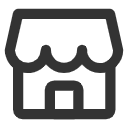- Attractions in Mauritania
- Language
- Mauritania's linguistic landscape is diverse, with Arabic as the official language and widely spoken by the majority of the population. The local dialect, Hassaniya Arabic, reflects the country's cultural heritage. In addition to Arabic, French is commonly used in administration, education, and business due to the country's colonial history. While English is increasingly being taught in schools and is gaining popularity, particularly among younger generations and in urban areas, it is not as widely spoken.
- Best time to visit
- The best time to visit Mauritania is during the cooler months, from November to February, when temperatures are more comfortable for exploring the country's vast deserts and historical sites. During this period, daytime temperatures range from 20°C to 25°C (68°F to 77°F), making it ideal for outdoor activities. Additionally, this is the dry season, minimizing the chances of rain and allowing for clearer skies and better visibility.
- Festivals
- Date: OctoberFestival name: Mauritania Independence DayCelebrated on November 28, Mauritania's Independence Day marks its liberation from France in 1960. Travelers can experience patriotic parades, music, dance performances, and various cultural exhibitions reflecting the country's rich heritage and national pride.
- Date: JanuaryFestival name: Festival of the DesertThe Festival of the Desert is held annually in the Sahara during January, celebrating Mauritania's nomadic culture. Visitors can experience Tuareg music, camel races, traditional dances, and artisan markets, offering a unique blend of desert life and cultural heritage.
- Local cuisine
- Couscous
- A staple dish made with steamed couscous, served with a stew of fish, vegetables, and aromatic spices like saffron and cumin.
- Mechoui
- A traditional dish of slow-roasted lamb or mutton, often prepared for special occasions, seasoned with spices and served with flatbread or rice.
- Mafé
- A rich, flavorful stew made with meat (usually lamb or chicken), peanut butter, and vegetables, served with rice or couscous.
- Zrig
- A refreshing drink made from fermented camel or cow's milk, lightly salted and served cold, often consumed as a refreshing beverage in the desert heat.
- Boulle
- A traditional Mauritanian dish made from boiled millet or sorghum, often served with a hearty meat or vegetable stew.
- Hareira
- A thick, spiced soup made from tomatoes, lentils, and chickpeas, often served with bread, providing a hearty and nutritious meal, especially during fasting periods.
- Tagine
- A slow-cooked stew made with meat (often lamb or chicken), vegetables, and spices, cooked in a traditional clay pot, and served with bread or couscous.
- Mint Tea
- A popular beverage in Mauritania, mint tea is made by boiling green tea with fresh mint leaves and a generous amount of sugar, creating a sweet and refreshing drink often served during social gatherings.
- Packing
When visiting Mauritania, lightweight, breathable clothing is crucial for the hot daytime temperatures, with long sleeves and pants recommended to protect against the sun and insects. A wide-brimmed hat, sunglasses, and sunscreen will help shield you from the intense sun. Sturdy walking shoes are ideal for exploring diverse terrains, while a pair of sandals can offer comfort in more relaxed settings. Don't forget a reusable water bottle to stay hydrated, along with a basic first-aid kit and any necessary medications. Lastly, a light jacket or sweater is useful for cooler evenings, particularly in the desert.
- Currency
In Mauritania, the official currency is the Mauritanian ouguiya (MRU). The currency is available in both coins and banknotes, with denominations of 1, 5, 10, 20, 50, 100, 200, and 500 ouguiyas. ATMs are available in major cities like Nouakchott and Nouadhibou, but they may not always accept foreign cards, so it's advisable to carry cash. Credit cards are accepted in some hotels, restaurants, and larger businesses, but cash remains the preferred method of payment, especially in rural areas and local markets. Travelers should plan accordingly and exchange some currency before their arrival for convenience.
- Transport
Mauritania's main international gateway is Nouakchott-Oumtounsy International Airport (NKC), located about 25 km from the capital, Nouakchott. For in-country travel, visitors can choose from buses, shared taxis (known as "sept-place" for their seven-passenger capacity), and rental cars, with the latter being ideal for exploring remote areas. Although the road conditions can vary, major routes are generally accessible. It's advisable to book transport in advance, especially during peak travel seasons, and to negotiate fares upfront for shared taxis. For a more authentic experience, consider using local buses, but be prepared for potential delays and crowded conditions.
- Emergency
When traveling to Mauritania, both men and women should dress conservatively, with women often required to cover their arms and legs. Additionally, public displays of affection and open discussions about religion or politics can be considered disrespectful. As for emergencies, the local emergency number is 18 for police, 15 for medical emergencies, and 17 for fire services.
- Power socket
In Mauritania, the standard voltage is 220V with a frequency of 50Hz. The country predominantly uses Type C and Type E power sockets, which feature two round pins.
- Top Mauritania tour operators
Happy Explore Safari *
3 ReviewsOffer Tours InKenya 2 ToursVerified



